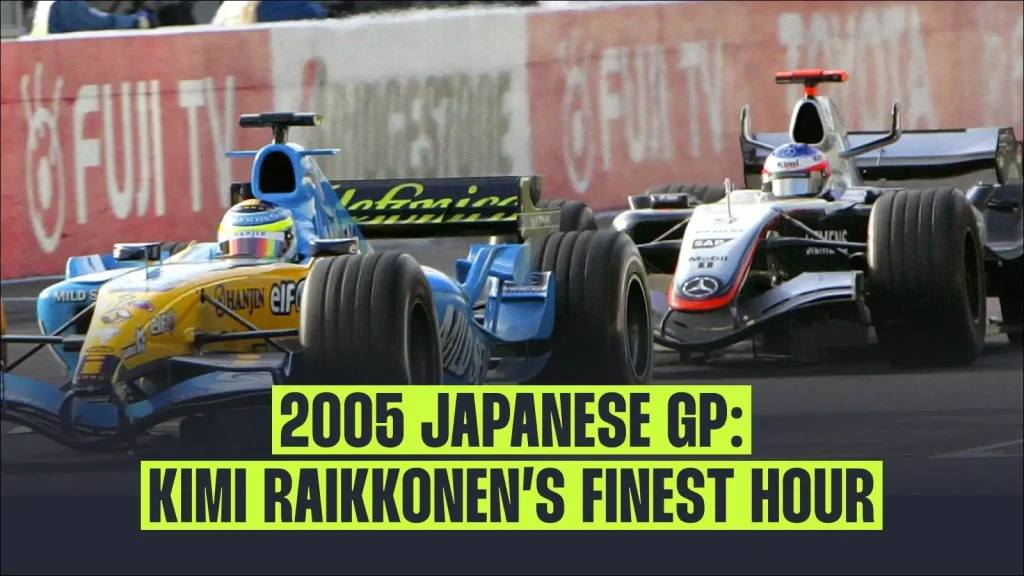This weekend commemorates the 20th anniversary of one of the most remarkable drives in Formula 1 this century.
Although the Japanese Grand Prix is now part of the early-season lineup as Formula 1 looks to optimize travel arrangements, the Suzuka race traditionally took place near the end of the championship. This was certainly true in 2005 when McLaren and Renault faced off at the high-speed track located in Mie Prefecture.
McLaren Struggles in Qualifying
Two weeks before the Suzuka race, Fernando Alonso won his first World Championship in Brazil, after a fierce year-long contest with McLaren’s Kimi Raikkonen. Alonso had the edge in reliability, while McLaren lost points due to a series of engine failures and penalties, along with a notorious suspension failure at Nurburgring. Raikkonen, despite deserving the championship, found McLaren unable to provide the support he needed for a title win. Thus, Alonso arrived in Suzuka as the youngest F1 World Champion in jubilant spirits.
With just two races left, Suzuka would be crucial for Alonso in securing the Constructors’ Championship for Renault. However, he and teammate Giancarlo Fisichella faced a challenging task, as McLaren aimed to salvage its season with Raikkonen and Juan Pablo Montoya keen to restore their pride.
McLaren Faces Adversity
As the 2005 Japanese Grand Prix began, McLaren’s hopes dwindled when Fisichella managed to move into second position behind Michael Schumacher, further benefiting Renault. Alonso had a phenomenal start, climbing to eighth place by the end of the first lap. Meanwhile, Raikkonen struggled, finishing the first lap in 12th after a mistake in the final chicane and watching Montoya retire from a collision.
With McLaren now behind both Renaults, as Fisichella was second and Alonso eighth, the situation looked dire. Michael Schumacher quickly overtook to become sixth, while Alonso battled against Red Bull’s Christian Klien under confusing race instructions from Renault’s team. This ultimately led to Alonso losing critical time as Raikkonen tried to keep pace after moving past several competitors.
Raikkonen’s Strategic Charge
As the race progressed, the situation shifted dramatically. Fisichella, leading comfortably in the early stages, soon found Alonso nipping at his heels after a pit stop. When Alonso re-entered the race just behind Raikkonen and Schumacher, he quickly aimed to close the gap. By Lap 20, Alonso famously executed a daring overtake on Schumacher at 130R as he fought through the pack, which saw Raikkonen also striving for the podium positions.
The dynamic changed significantly during the latter half of the race as Fisichella pitted, allowing Raikkonen to move forward. Raikkonen, amassing impressive lap times, launched an aggressive pursuit that culminated in him pressuring Fisichella for the lead.
The Unexpected Conclusion
As Raikkonen closed in on Fisichella, the Renault driver made another defensive error that allowed Raikkonen to capitalize, overtaking him on the main straight just before the final lap. Raikkonen managed to hold onto this lead to claim victory, marking a stunning turnaround in what was expected to be a Renault triumph.
Raikkonen’s emotional win became one of the defining moments of his early career and remains a standout performance from his time in the sport. Conversely, Fisichella’s error marked a significant disappointment for Renault, despite what started as a favorable race. The victory kept McLaren within reach of the Constructors’ Championship, although the team would ultimately fall short by the end of the season.



